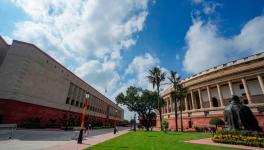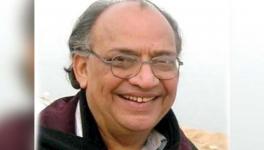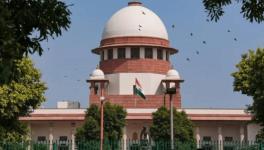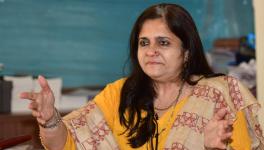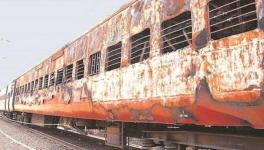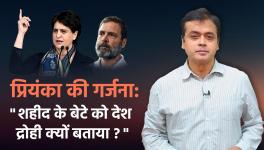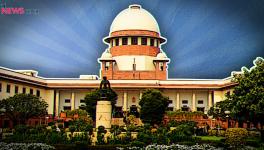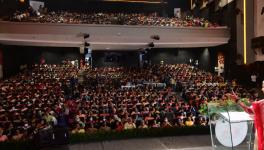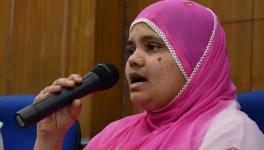Judge Buys Police, SIT’s Claim That Private Firing by Ahsan Jafri Triggered the Gulberg Society Massacre
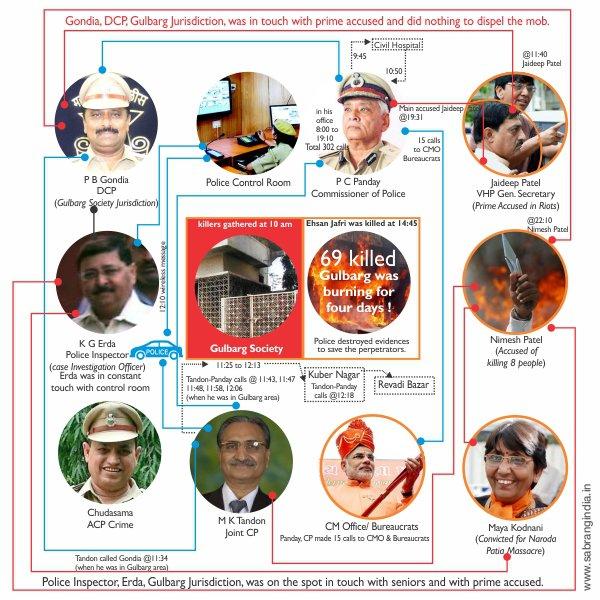
Image Courtesy: The Indian Express
"This is not only a complete insult to the life, work and memory of my father, Ahsan Jafri who worked and lived among his people but it makes a mockery of the sacrifice he gave of his life to save the life of others. What were the 24 police officers present doing for four hours, watching the show? The Judgement not only appears to have ignored the violent build up but appears to have been standing some of the evidence on its head. We will soldier on till we get justice."
-Tanveer Jafri, son of Ahsan Jafri
Judge PB Desai’s judgement sentencing 11 to life imprisonment and denying of a criminal conspiracy in the notorious Gulberg carnage trial appears clearly based on his acceptance of the argument that a 5,000 strong mob (according to the police/SIT; witnesses say 15,000) got “really provoked only after the firing from a private weapon by former parliamentarian Ehsan Jafri.”
Three pages of the 1,345 page verdict delivered today and accessed by SabrangIndia appears to completely negate any and all of the evidence related to the violent acts between 9 a.m. and 1.30 p.m. at Gulberg Society, Ahmedabad on February 28, 2002 when the mob had gathered. On June 2, 2016 the Judge had first stated that he had not accepted charges of conspiracy around the eight hour long daylight mob attack on the Gulberg Society on February 28, 2002. It appears that the discarding of the conspiracy charge by the Judge (a charge also not pressed by the SIT and its prosecutor RC Kodekar) hinges around the findings reflected below.
Police witnesses Arvindbhai Shankarbhai Vaghela (No.7), Dhanesing Becharsing (No.13), Natwarji Javanji Bhati (No. 269) have all stated that [joint police commissioner MK Tandon came with a striking force and police inspector KG Erda was present here on the road outside G.B. Society. There the two officers met each other. The former had with him a ‘Vrij’ vehicle with all the equipment. Mob gathered there and the police fired shells at the mob. KG Erda requested Tandon to send more force, but the latter left the area without any action].
Besides, eye witness testimonies have stated that violent members of the mob forcibly closed down shops at 9 am, attacked the Ankur Cycle shop at 10 am, burned down a rickshaw between 10-10.30 am. Witnesses have also testified to the commissioner of police, PC Pande coming to the society and leaving around 10.30 a.m.
Yet judge PB Desai finds that the well-armed mob that had gathered for well over four hours on the morning of February 28, 2002 only got really violent around 1.30 pm after the reported incident of Ehsan Jafri’s firing.
This is not only a complete insult to the life, work and memory of my father, Ehsan Jafri who worked and lived among his people but it makes a mockery of the sacrifice he gave of his life to save the life of others. What were the 24 police officers present doing for four hours, watching the show? The Judgement not only appears to have ignored the violent build up but appears to have been standing some of the evidence on its head. We will soldier on till we get justice
-Tanveer Jafri, son of Ahsan Jafri
Ironically, these readings from the judgment seem perilously close to the arguments of the defence council over the past week, seeking a reduction of the sentence. Crucially, these arguments ignore the testimony of police witnesses that have stated that joint commissioner MK Tandon came to the Gulberg society around 10.30 am with a vehicle fully armed and a ‘strike force’ but left the area without leaving the strike force behind to protect the society already under attack.
Paras from Pages 787, 788, 789 of the 1,345-page long judgement
‘….Selectively erased from the memory of all the victims and also from the submissions of learned advocate Shri SM Vohra who appeared for the victims/witnesses and very barely finds a grudging mention in the submissions of Shri Kodekar the learned Special PP appearing on behalf of the state in my opinion, a clear fact emerges from the forensics report, recovery panchnamas and discovery of a weapon from Gulbarg Society which provides complete answer in my opinion, which can conclusively establish as to why the mob which was largely involved in stone throwing and attempting to burn and damage the vehicles and property of member of the minority outside Gulbarg society, suddenly turned into an ugly mob which indulged in the massacre of so many men, women and children of the minority community. The answer is categorically found, in my opinion, in the incident of private firing on the part of the deceased, Shri Ehsan Jafri which resulted in some deaths from amongst the members of the mob and injuries to a number of persons of the mob which infuriated the mob who saw a person belonging to the majority community falling to the bullets being fired from the private weapon by Shri Ehsan Jafri. The evidence discussed herein after, in my opinion, categorically establishes that there was a private firing by Shri Ehsan Jafri. The evidence discussed hereinafter, in my opinion, categorically establishes that there was a private firing by Shri Ahsan Jafri from a number of locations within Gulbarg Society and upon the mob which had gathered outside Gulbarg society.
“The Panchnama Exh[ibit] 260 further establishes the recovery of empty cartridge shells established ballistically to have been fired from the muddamal weapon recovered from the Bunglow of Shri Ehsan Jafri, and a large number of police witnesses have categorically testified with regard to their specific knowledge regarding the incidents of private firing from within Gulbarg Society which led to the mob to be so incensed and provoked that it indulged in the carnage. The police witnesses have as per the details provided herein after, specifically stated in their opinion after such incidents of private firing causing deaths and injuries to persons of the majority community, that the mob according to the police witnesses “went out of control” meaning thereby that a frenzy overtook the mob which thereafter did not listen to reason and it can be seen from the material on record that it was only the residence of Shri Ehsan Jafri that was selectively targeted by the mob, surrounded by the mob and attempted to be burned down which resulted in a lot of deaths of innocent persons on account of the burns sustained in the residence of Shri Ehsan Jafri and those unfortunate few, who could not withstand the smoke and fire and could not escape to the first floor of the Bunglow of Shri Jafri, in their attempts to escape the flames, are established to have rushed out of the residence and in the process were hacked to death by the angry mob. I am, therefore required to firstly bring on record the basis for my arriving at a conclusion that it was the private firing by Shri Ehsan Jafri that acted as a catalyst and which infuriated the mob to such an extent that the mob went out of control, the limited police force available thereat had no means to control or disperse such mob which had gathered in larger numbers post the incident of private firing and having gone out of such control, the mob in my opinion, was instrumental in burning down the ground floor portion of Shri Ehsan Jafri’s residence after surrounding the residence of Shri Ehsan Jafri on all sides..
“…595. Further, I am required to consider the fact that no less than 20 police personnel examined as prosecution witnesses herein, have all testified with regard to the taking place of private firing from within the Gulbarg Society and the resultant effect of the mob going out of control on account of injuries/death being sustained in such private firing.”
This partial portion of the judgement appears to suggest that the judge has ignored the detailed evidence led by the advocates for the witness survivors, reiterated again, in writing, in response to the defence arguments on June 9, 2016. The salient points of the table submitted by the witness lawyers SM Vohra and Salim Shaikh in Court are:
►Shops belonging to the Muslim minority selectively burned and looted in the Meghaninagar area, including Dr. Gandhi’s Chawl, Hukamsing’s Chawl, New Chawl, Hasan Jivabhai’s Chawl, Ghee’s Chawl, Santokben’s Chawl, Muni. Slum Quarters, Chaturji’s Chhapra etc. Between 10.30 to 11 am on February 28, 2002. (Police and Eye-Witnesses).
►Stone-pelting and flinging of burning tyres and other inflammable items by the mob at the Gulberg Society by 12 noon.
►Police record and evidence gathered has shown that the police fired as many as 14-16 rounds on the mob (bullets/shells) gathered at Gulberg Society between 12 noon and 2 pm.
►Phone call records of joint commissioner of police MK Tandon and DCP PB Gondia reveal that they were in constant touch, were barely 1.5 kilometres from Meghaninagar suggesting that the top policemen were fully aware of the mob attack on the society and yet did not act to prevent crimes nor order their men and force to intervene.
►Despite this huge build up at Naroda Patiya and Gulberg Society (within two kilometres of each other) curfew was declared by PC Pandey, as per control room report, very late and only in Naroda Patiya at 12:38 pm (despite the mob gathered there since 9 am) and at the Meghaninagar only as late as 12:54 pm.
► Despite a VHP sponsored, BJP supported Gujarat Bandh a 5,000 armed strong mob was allowed free reign of Ahmedabd’s streets and curfew was declared as late as 12.54 pm in Meghaninagar.
Is this not enough evidence of conspiracy apart from the phone call records of PC Pande that show how he was in regular contact with the chief minister’s office (CMO) which fact too appears to have been ignored by the Judge?
Incidentally, it was in the RK Raghavan-led ‘Closure Report’ (authored by Himanshu Shukla of the crime branch, Gujarat police) in the Zakia Jafri Case (February 8, 2012) that for the first time SIT has stated that “Ms. Jafri's husband and former MP Ehsan Jafri was killed because he provoked a ‘violent mob’ that had assembled ‘to take revenge of Godhra incident from the Muslims’. Ehsan Jafri fired at the mob and ‘the provoked mob stormed the society and set it on fire’.
Ironically, the SIT makes this assertion even as it clears Narendra Modi of the charge that he had invoked the Newtonian theory of ‘action and reaction' to justify the post-Godhra anti-Muslim violence. The Hindu had reported on this in May 2012 and commented: “Yet, in trying to absolve Mr. Modi, the SIT fully implicates the Chief Minister and itself. Not once but twice.”
“The SIT first insists that Mr. Modi saw the firing by Ehsan Jafri as “action” and the “massacre that followed as ‘reaction'.” It follows this up by quoting the chief minister as saying the Sabarmati carnage was a “heinous crime, for which ‘reactions' were being felt.” Now the SIT not only confirms that Mr. Modi used the words “action” and “reaction” but endorses his statements even while holding that the “alleged statements” have been “quoted out of context … and therefore no case is made against him.”
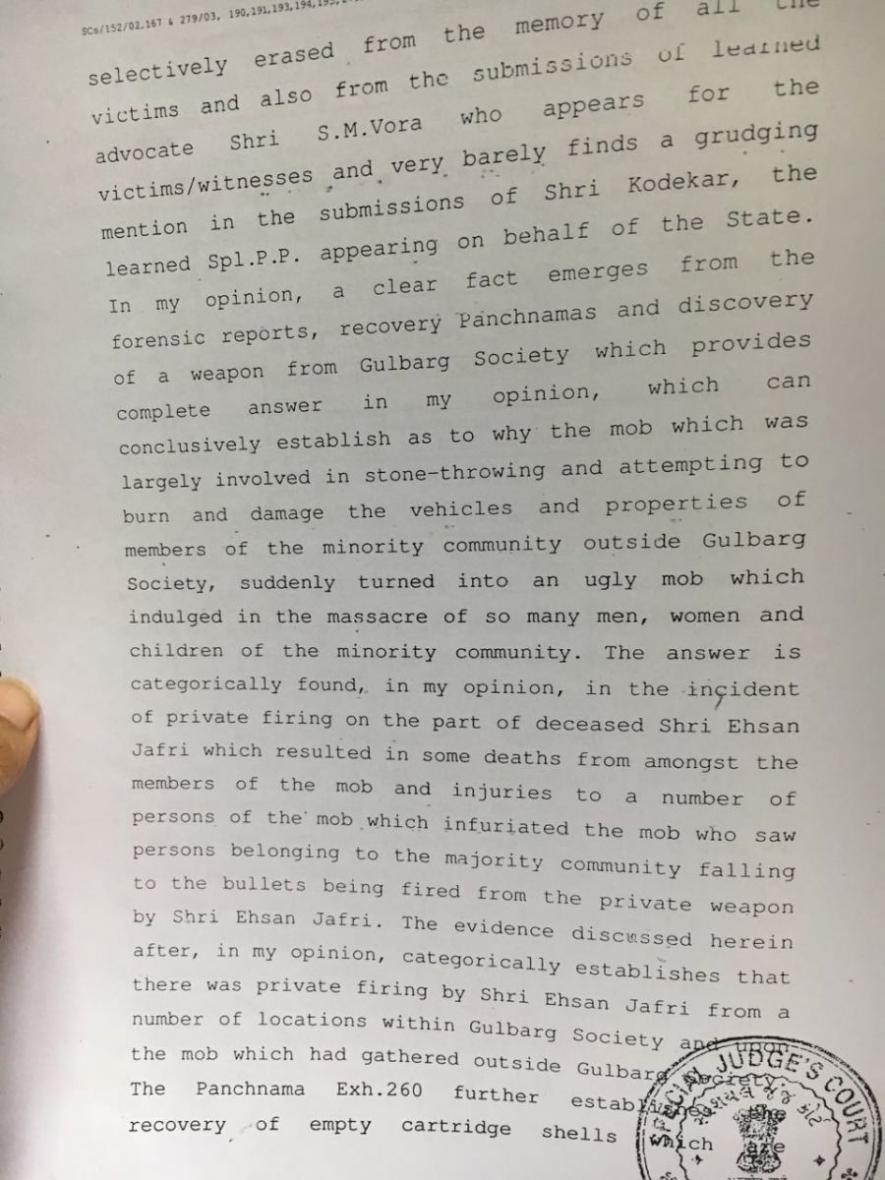
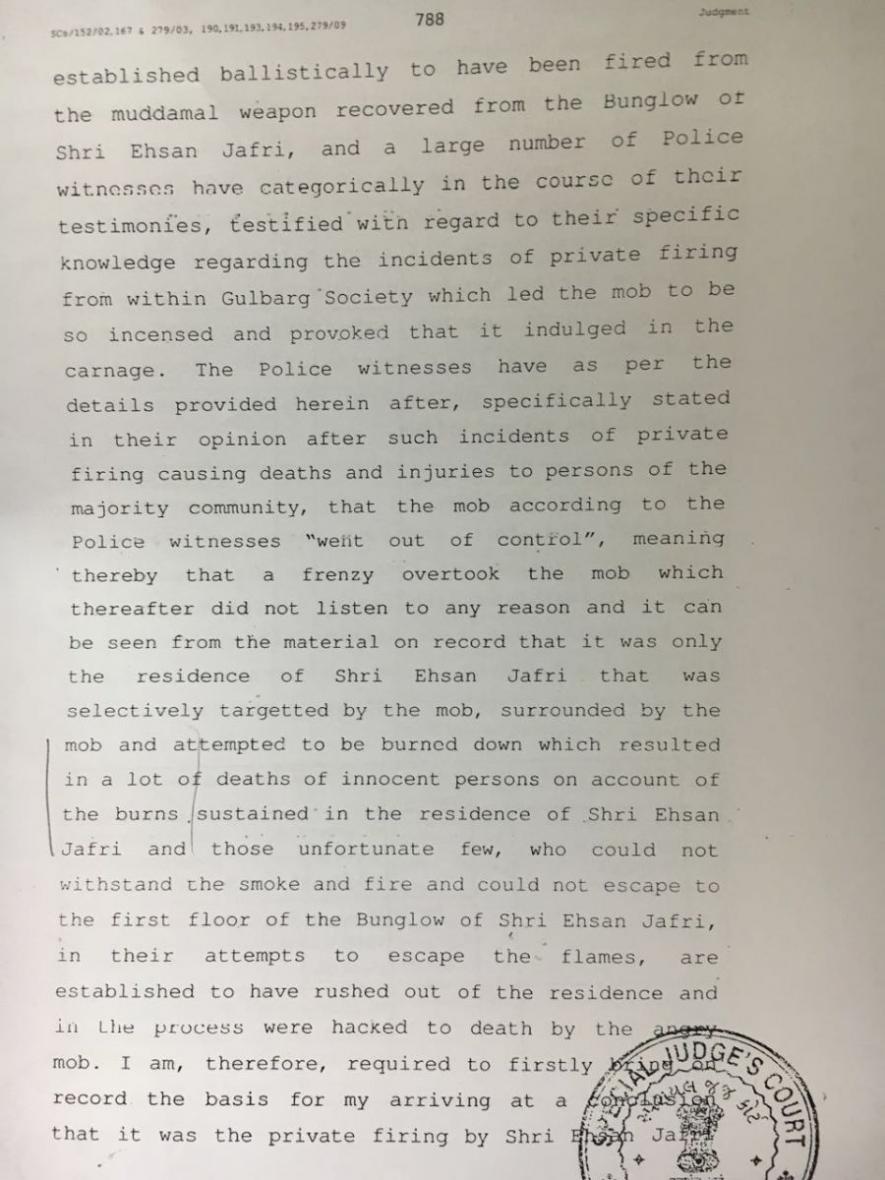
Image Courtesy: Indian Express
The SIT's controversial observations are recorded in a chapter dealing with a specific allegation made by Ms. Jafri: that Modi had given media statements, including an interview to Zee TV on March 1, 2002, where he justified the anti-Muslim pogrom as a reaction to the Godhra violence by Muslims. Strongly defending the chief minister against the charge, the SIT cites its own March 2010 interrogation of Mr. Modi: “As regards the Zee TV interview of 01-03-2002 is concerned, Shri Modi told the SIT that after a period of eight years, he did not recollect the exact words but he had always appealed only and only for peace … He also said that if his words cited in this question are considered in the correct perspective, then it would be evident that there is a very earnest appeal for people refraining from any kind of violence …”
In the closure report, the SIT summarises the episode, and goes on to offer its own conclusions: “In this connection, it is to be stated that Shri Narendra Modi has clearly stated in his Zee TV interview that it was late Ahesan Jafri, ex-MP, who first fired at violent mob and the provoked mob stormed the society and set it on fire. In this interview, he has clearly referred to Jafri’s firing as ‘action’ and the massacre that followed as ‘reaction’. It may be clarified here that in case late Ahesan Jafri, ex-MP, fired at the mob, this could be an immediate provocation to the mob, which had assembled there to take revenge of Godhra incident from the Muslims.”
The SIT also justifies Modi’s description of Godhra residents as people with “criminal tendencies” and his statement that the heinous crime (burning of Sabarmati train) had led to reactions. “Again with regard to the Godhra incident, [Modi] clearly stated that the day before yesterday 40 ladies and children were burnt alive at Godhra and the incident had shocked the nation as well as people abroad, and that the people belonging to this area had a criminal tendency and these people had earlier killed lady teachers and now they had committed heinous crime for which the reactions were being felt.”
So what caused Jafri to fire at the mob which was so “provoked” by the action that it “stormed inside” and killed nearly 70 Muslim residents of Gulberg Society? In 2004, then police commissioner PC Pande deposed on this before the GT Nanavati- KG Shah Commission. According to him, he got a message at about 12.15 p.m. on February 28, 2002 from the Meghaninagar police station (where Gulberg is located) that “a crowd of nearly 10,000 had gathered near Gulberg Society and that society is encircled and the crowd pelting stones.” Pande said in the deposition that he could not recollect if he got distress calls from Gulberg but he sent “two additional deputy superintendents of police with the police force.” He did not send further assistance because he felt that “generally PI (police inspector) and DCP (deputy commissioner of police) are capable to control such situation.”
Pande claimed that following a fresh request at 2 pm, he sent one section of the Central Industrial Security Force (CISF). However, Pande said he was unaware of the whereabouts of the men he had sent as reinforcement: “I cannot say where they were and what duties they were performing at the time when the persons of Gulberg Society were started to be burnt.” The police commissioner was also unaware of an affidavit filed by the police inspector attached to Meghaninagar wherein the PI had said that between 2.30 and 3 pm there were only 14 policemen near Gulberg society. This was the situation at Gulberg at about 3 pm, with the police commissioner not knowing where his men were and a police inspector complaining that there were only 14 policemen. By 5 pm the mob had killed Ehsan Jafri and many others.
Curiously, in a background note (in the same SITs Closure report ) to Zakia Jafri’s complaint, the SIT says Ehsan Jafri fired in “self-defence” — in contrast to how it portrays the same incident later in the report, when it invokes the action–reaction words of Mr. Modi.
This is what the SIT’s background note says about the Gulberg incident: “On the day of the bandh, i.e. 28.02.2002, a huge mob comprising about 20,000 Hindus gathered, armed with deadly arm weapons, in furtherance of their common intention and indulged in attack on the properties, shops and houses of Muslims as well as a madrasa/mosque of Gulberg society located in Meghaninagar, Ahmedabad city, resulting in the death of 39 Muslims, including Ahesan Jafri, ex-MP, injuries to 15 Muslims and 31 Muslims went missing. Late Ahesan Jafri fired from his private, licensed weapon in self defence causing injuries to 15 persons in the mob. One of the victims of the said private firing succumbed to injuries later.”
Within the space of a few pages, however, what the SIT saw as “self-defence” in one context had become a “provocation.”
It appears that the SIT (Raghavan led) and its prosecutor RC Kodekar’s stance in deliberately diluting arguments of criminal conspiracy in the Gulberg society trial are directly linked to its pre-determined stance to avoid further process and prosecution of powerful accused in the Zakia Jafri case.
Disclaimer: The views expressed here are the author's personal views, and do not necessarily represent the views of Newsclick
Get the latest reports & analysis with people's perspective on Protests, movements & deep analytical videos, discussions of the current affairs in your Telegram app. Subscribe to NewsClick's Telegram channel & get Real-Time updates on stories, as they get published on our website.









